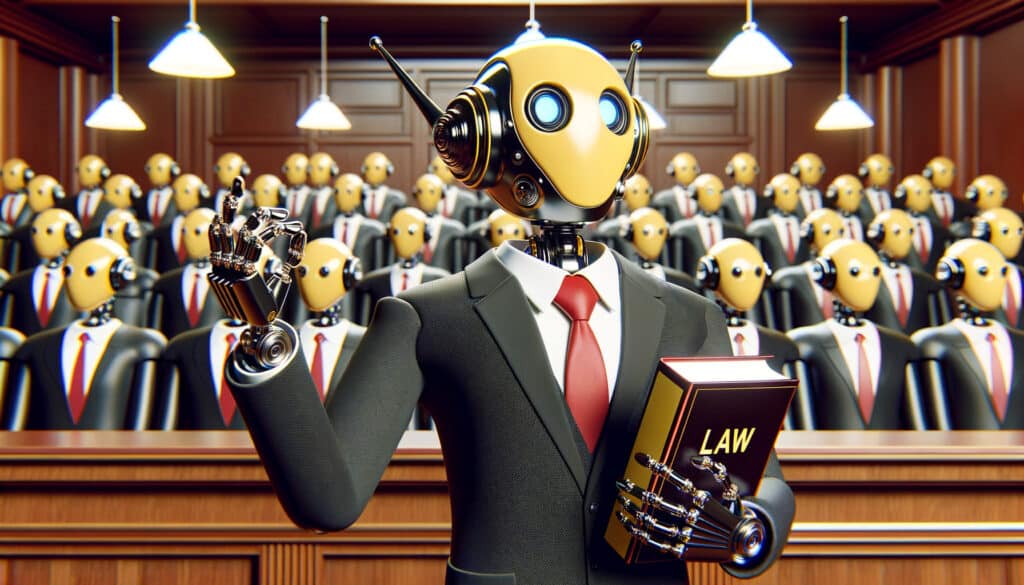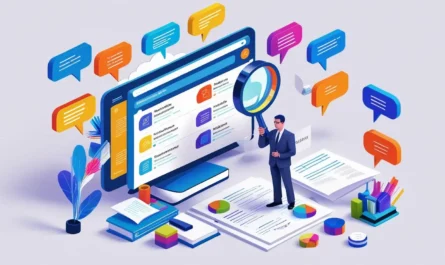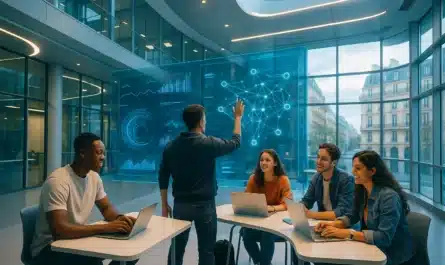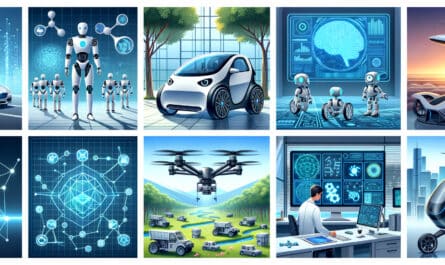In a business environment where document workloads are exploding, legal professionals are questioning the ability of artificial intelligence to lighten certain tasks without losing any of their rigor. Among language processing tools, ChatGPT is attracting growing interest from law firms, in-house legal departments and corporate management. But can we really trust a conversational agent to process legal content? Between document generation, research assistance and formulation help, the use of ChatGPT in law raises as many opportunities as precautions. But it’s important to understand both the appropriate uses and the practical limits.
How do I use ChatGPT for legal questions?
The use of ChatGPT in the legal field is growing rapidly, both among professionals and private individuals. This tool can be used to clarify certain legal concepts, help draft documents, or facilitate the reading of complex texts. However, this assistance is based on a collaborative logic: the user provides elements, and the tool uses them to produce structured content.
Let’s take a common example: a company wants to draw up a service contract. By formulating a precise request, such as ” write a draft contract for an IT consulting mission, including a confidentiality clause and monthly payment terms “, ChatGPT will propose a coherent text, structured according to contractual practices. But this text is only a working basis. Only a legal professional will be able to validate the document’s compliance with local laws!
In another situation, a law student could use ChatGPT to synthesize a court decision from a long, technical ruling. By copying the text into the input field with instructions such as ” summarize this decision, highlighting the court’s motivation and legal foundations “, he or she will obtain a condensed version. This approach saves time, but does not dispense with the need to read the entire judgment for a full understanding.
ChatGPT can also simulate an exchange or a standard response to a customer. For example, a law firm wishing to automate an initial response to a mediation request could generate an e-mail template explaining the next steps, the documents to be gathered, and approximate deadlines. However, any communication involving liability or interpreting a legal text must be checked by a qualified lawyer.
What is the best legal AI?
There is no universal answer to this question. The choice depends on the need: some tools are designed to analyze contracts, others to study case law, and still others to automate administrative procedures.
ChatGPT, in its advanced versions such as GPT-4o, and now GPT 5, offers great textual flexibility. It can write, reformulate, summarize or organize information. Its effectiveness depends on the clarity of the instructions. For example, asking ” Give me an example of a non-competition clause valid under French law ” will produce usable content that can be adapted to the specific context.
More specialized alternatives are worth mentioning. Predictice is often cited for its predictive analysis of judicial decisions. It measures the chances of success of a case, based on a large volume of case law. This type of service is aimed primarily at professionals who want to objectify their strategic choices.
Tools such as Legal Robot or Luminance are being used more and more to screen contracts for inconsistencies, duplications, risky clauses or breaches, even in cover letters. These solutions are integrated into law firms and legal departments handling large volumes of documents.
Another recent player, Le Chat par Mistral, is starting to make a name for itself in the French-speaking legal world. Its understanding of French linguistic nuances and Le Chat de Mistral ‘s ability to adapt to context make it an attractive option for firms working primarily in French law.
Let’s take a concrete example: a business lawyer wants to quickly check a twenty-page contract for an unfair termination clause. Legal Robot will enable a more targeted and relevant analysis than a general query on ChatGPT. However, for drafting an argument in a letter to a colleague, GPT-4o can provide an effective first draft.
The best legal AIs :
- Predictice
- Legal Robot
- Luminance
- Mistral

Is there a ChatGPT for the law?
Strictly speaking, there is no official version of ChatGPT dedicated exclusively to the law. The tool is based on a generalist language model, trained on publicly available data, including accessible legal texts. This means that its responses may reflect an approximate understanding of the law, especially where it evolves frequently or varies between jurisdictions.
This does not prevent some companies from creating tools as alternatives to ChatGPT, but specifically trained on legal corpora. These solutions integrate internal legal databases, apply compliance filters, or add verification modules. It is these systems that give rise to forms of “ChatGPT for the law”, even if this is not an official name.
A useful example: an insurer develops an AI assistant to help its lawyers respond quickly to simple disputes (processing delays, disputed claims, etc.). It will be able to integrate GPT with a legal document base, including internal decisions, standard scales and applicable legal texts. The result is a specialized chatbot, capable of producing rapid responses, but always checked by an expert.
On the other hand, unsupervised use of ChatGPT to obtain precise legal answers can lead to serious errors, particularly if the data is old or if the system extrapolates an answer. This risk explains why informed users regard the tool as a writing or research aid, and not as a substitute for advice.
How can AI be used in the legal field?
The uses of AI in law extend far beyond simple text generation. It enables internal legal processes to be reorganized, processing times to be reduced, and often dispersed information to be structured.
A law firm can use AI to identify inconsistent clauses in a series of contracts. A legal department can use it to automatically create standard templates, based on a common charter, and adapt them according to precise criteria (type of customer, business sector, jurisdiction). This approach reduces the amount of repetitive manual drafting, while ensuring overall consistency.
Artificial intelligence is also used to simulate legal scenarios based on contextual elements. For example, some tools can analyze previous court decisions to anticipate the likelihood of a favorable ruling in a dispute. This enables a lawyer to decide whether to settle or sue.
When it comes to managing emails and recurring requests, AI-based assistants can automatically answer frequent questions. The challenge is to ensure rapid processing, without the need for human intervention at every stage. However, final validation remains manual when a legal element involves liability.
Regulatory constraints must not be ignored. The application of the RGPD and requirements linked to algorithmic transparency are forcing companies to clearly define the use of data, limit its retention, and guarantee its confidentiality. In a sector like law, where information is often sensitive, these requirements are becoming unavoidable.

How do I use ChatGPT as a lawyer?
Lawyers can take advantage of ChatGPT to speed up their daily tasks, without ever delegating their expertise. The tool becomes a textual assistant, capable of proposing formulations, summaries or clause variants, based on a well-constructed prompt.
Let’s take a practical example: a lawyer writes a letter to a colleague to formalize a formal notice. By asking ChatGPT: “propose a model for a formal notice concerning a non-conforming delivery in a B2B contract”, he will obtain a reusable structure. All that remains is to insert the factual elements, dates and precise references, and to check the validity of the wording in local law.
For documentary research, ChatGPT can also be used to rough out a subject, by offering a summary of the applicable texts, or listing the general principles of the law concerned. This kind of preliminary work can be useful when a file opens on an unfamiliar topic. However, no legal research can be considered complete without consulting official sources (Légifrance, Doctrine.fr, case law databases).
Finally, the tool can be used to formulate clause variants according to different strategies. For example, a lawyer negotiating a contract could test several formulations of a termination clause, by asking ChatGPT to produce a firm version, a flexible version and a balanced version. These proposals will not replace the lawyer’s judgment, but will provide additional drafting angles.
The use of ChatGPT must be subject to a number of precautions. Data entered into the tool must be anonymized, exchanges must not contain confidential elements, and texts generated must never be copied without verification. Used within this framework, the tool can become a productivity lever, without ever calling human skills into question.






